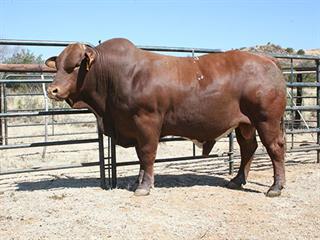Maize prices may increase from now till harvesting time. World prices have clearly moved to a new level.’International maize prices have
increased significantly over the last year. In December 2005 maize traded at /ton on the Chicago Board of Trade (CBOT). The price increased to 3/ton by June 2006 and reached 6/ton on 15 January
2007.
Various factors played a role in this increase. US had a below-average crop, stocks were at the lowest level in years, and the increase in bioethanol production from maize in the US resulted in a tighter supply/demand situation.
The development of the bioethanol industry has changed the international supply/demand scenario. Over the period from October 2005 to August 2006, maize averaged /tonn on the CBOT. From 2006 to January 2007 prices averaged 2/ton – an increase of 38%.
The use of biofuel will increase as governments force fuel manufacturers to add specific quantities of bioethanol to petrol and of biodiesel to diesel. Africa’s concept strategy requires the inclusion of 8% ethanol in petrol and of 2% biodiesel in diesel. Signatories of the Kyoto Protocol will have to reduce their use of fossil fuel over time. As pressure from environmental groups increases, the production and use of bioethanol will increase.
Bioethanol is expected to influence prices in the medium term. The US Department of Agriculture predicts that ethanol production will use 25% of all maize produced by 2015. Food and Agricultural Policy Research Institute in the US highlighted bioethanol
production as one of the factors that will drive grain prices during the next couple of years. A recent Food and Organisation outlook also confirms this. Maize prices are expected to increase by 27% from 2005/06 to 2010/11, and from 2011 to decrease slightly to 2015.
The upward trend in international maize prices (Figure 1) will not continue indefinitely.
Various factors will interact to limit the increase in prices. Better crop genetics and improved agronomic practices have resulted in an increase in the US of 1,5% per year in maize yields per hectare since 1944. Since the introduction of biotech
crops in 1996, this rate of increase has accelerated to nearly 2% per year. The same trend is visible in South Africa, where genetic and agronomic practices have improved to such an extent that farmers will obtain reasonable yields even with below-average production conditions. At one stage there was a 10t/ha maize club in KwaZulu-Natal with a limited membership. Nowadays all irrigated maize produces more than 10t/ha. The development of additional biotech properties such as drought resistance
will also result in increased yields.
Ethanol production produces distiller’s dried grains with solids (DDGS) that can be used as animal feed. Bureau for Food and Agricultural Policy’s 2005 report estimates an inclusion rate of DDGS in normal feed rations of 6% for high-quality
DDGS and between 3% and 3,5% for lower-quality DDGS. However, some recent US feed trials have successfully used up to 45% in beef and pork rations and a maximum of 20% in dairy rations.
The availability of DDGS as a feed supplement will have a negative impact on international grain prices in future. Higher production to fulfil the increased demand and technological improvement will contribute to this trend.
What about South Africa?
The South African government proposes the regulatory inclusion of 8% bioethanol in petrol. This creates a huge market for bioethanol in Africa. ratio between the price of maize and the price of ethanol will determine whether this ethanol is manufactured
in Africa or imported from other countries. Internationally, bioethanol industries rely heavily on government subsidies.
Without this, it seems impossible to develop a viable local bioethanol industry.
Bioethanol production in the US and other countries has resulted in a sharp increase in maize prices. This has combined with the weaker rand to increase maize prices, and especially the yellow maize price in Africa. Dry conditions during the planting season and summer have resulted in drought damage to maize crops in many areas. Chances are that maize prices may increase from now till harvesting time. World prices have clearly moved to a new level and if we produce less than our total needs, prices will remain at or near to import parity.
For maize producers this is good news. It is not as good for livestock producers
as feed companies always manage to immediately pass any price increase on to farmers. possible future availability of DDGS will have little or no impact on feed prices. Livestock farmers will have to adapt to higher prices in the short term.
In the longer term, the increase in production will catch up with the increase in consumption, and grain prices will probably stabilise at realistic levels. Markets do adapt to price changes, and in time the effect of bioethanol production on grain prices will decrease. However, the use of maize for bioethanol will make it possible for South African maize farmers to produce more maize in future – especially if the local bioethanol industry gets government support in terms of possible subsidies and import protection against ethanol imports.
Dr Koos Coetzee is an agricultural economist at the MPO. All opinions expressed in this column are his own. |fw









